With the success Real Madrid have achieved this season — winning La Liga, the Supercopa de Espãna and reaching a Champions League final — they have left no doubt in our minds that they are very much still a European superpower. Part of this success is the Spanish side’s mix of youth and experience to win matches.
Especially in midfield where key players such as Luka Modrić, who since arriving in 2012, has been a fundamental part of the team. Currently, some top talents are trying to take the Croat’s place in the starting 11, but even at the age of 36, Modrić has been an influential player for Real Madrid this season.
This scout report and tactical analysis will analyse Luka Modrić’s role within the team and answer the question: just why has he, at 36 years of age, been so important to Madrid’s success this season?
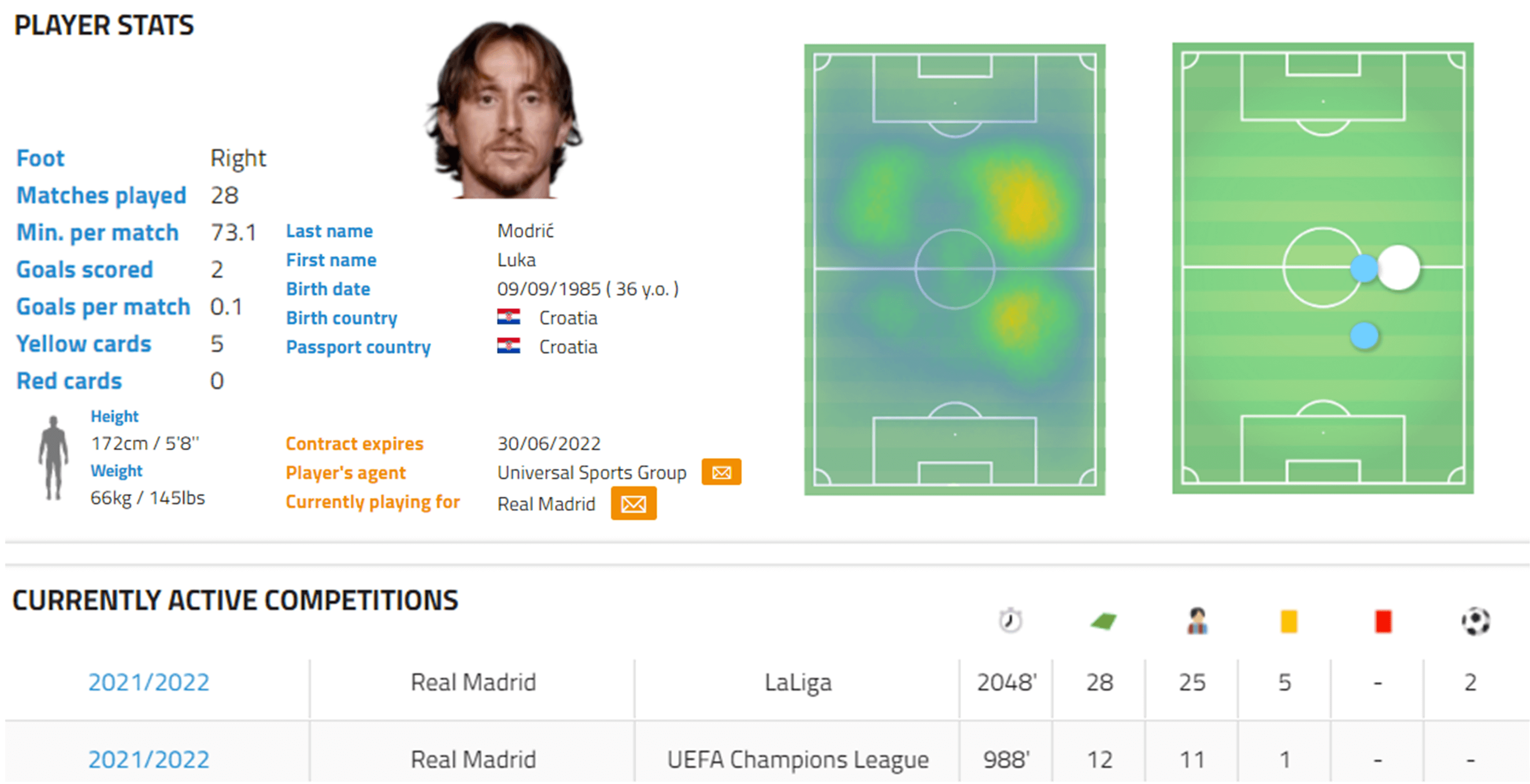
Role in attack
Modrić’s position in the current Real Madrid side is as a number 10, usually in the centre or slightly off-centre to the right in attacking midfield. His role in attack is to occupy positions between the lines, acting as a link between the defence and attack, and to play through balls to the strikers. With him focusing more exclusively on attacking responsibilities in this current iteration of the Real team, it optimises his role aligning it more to his strengths.
Modrić often finds himself in little pockets of space between the lines to break through a block, usually in the middle of two or three players. He has exceptional awareness on and off the ball, thinking two or three passes ahead of the play. Because of this, Modrić is at his best when he can get on the ball and turn at the opposition allowing him to assess his options choosing to go with the killer pass. This season he has a success rate of 86% on his 10 passes per 90 into the final third — displaying the quality he possesses in attack.
Modrić has lots of freedom in his position with the ability to roam across the midfield, finding space in all channels of the pitch. He prefers to pick up the ball in the centre of the pitch with the centre-backs being occupied by the strikers creating problems instantly when he receives the ball for the defending team.
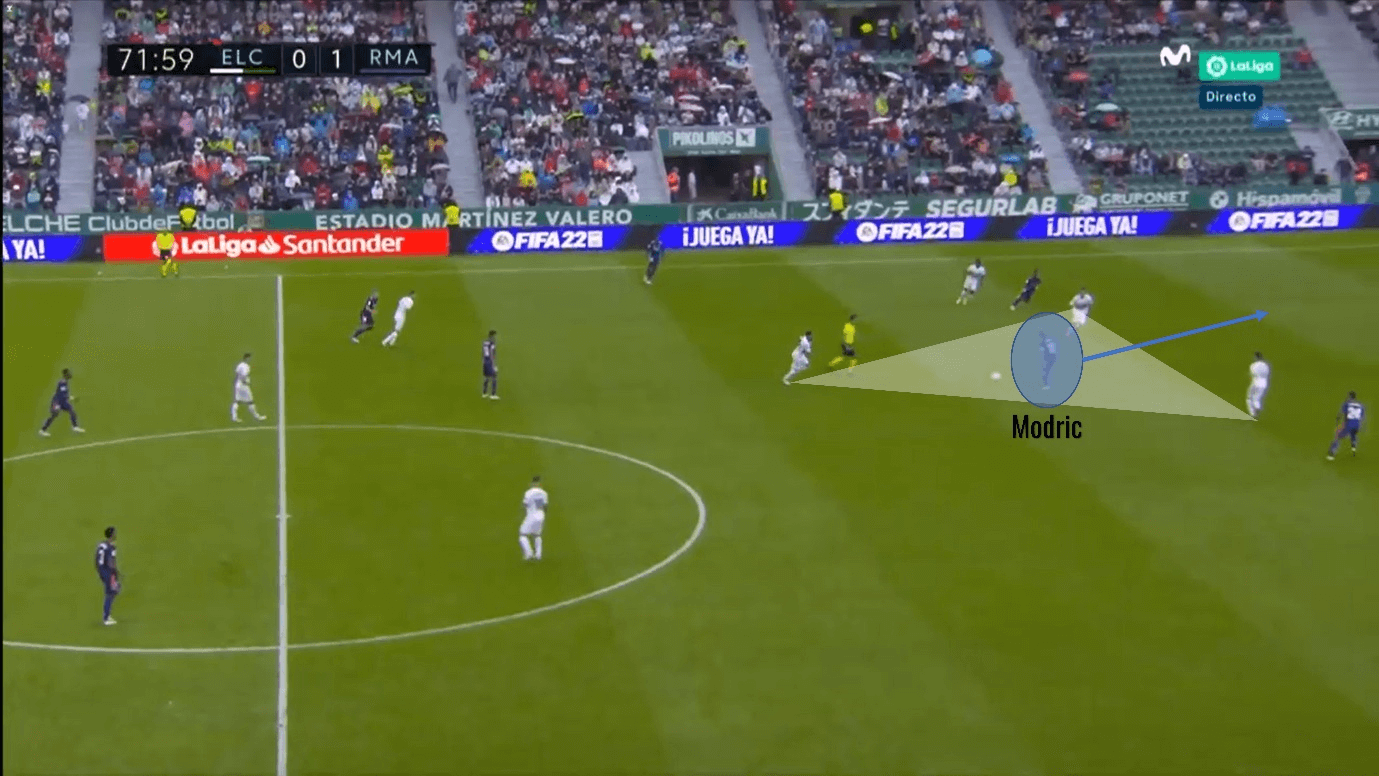
Within the Madrid system, the Croat is supported by two defensive midfielders in Kroos and Casemiro who will cover behind him so he can attack. However, even with two pivots in the side, Modrić will often drop deep to get on the ball when it is being built from the back slowly with the intent to speed up the build-up or to drag opposition defending players around.
When Modrić drops deep for the ball he will look to play and then vacate the space quickly. This aims to change the opposition’s block by shifting players in the structure. Modrić knows this will open up new spaces between the lines, giving him more areas to exploit and players like Kroos more time on the ball to find a pass.
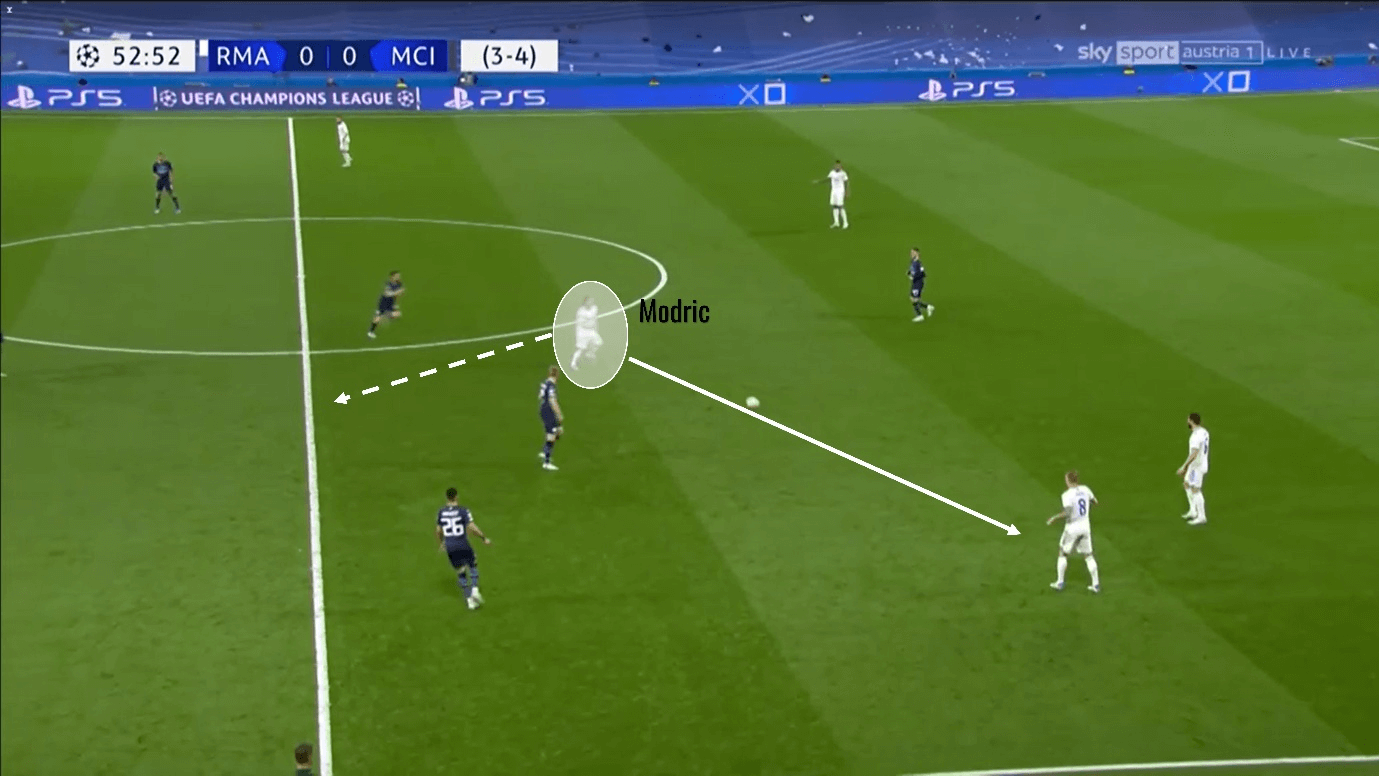
This shows his true versatility on and off the ball in the attacking phase and is what makes him such an elite player. Most of the attacks go through Modrić and Kroos in the midfield with the German often the metronome for the team keeping play steady and controlled, while the Croatian is the composer for the attacks and gets the team to create what he has seen three passes ahead. Modrić is ranked sixth for passes per 90, only behind the Barcelona defence, who progress the ball starting at the backline with great frequency, and teammate Toni Kroos — one of the best passers in the world. The Croat also has an accuracy of 90% on his 66 passes per 90, showing his consistency in retaining the ball and being an influential part of the Madrid system.
To still be one of the top playmakers in the world as a 36-year-old is incredible considering many players who reached or have played past this age in football often became more of a defensive playmaker with the nature of the position being less demanding than a number 10. Modrić continues to dominate in the attacking phase with him allowed to take on fewer responsibilities in the defensive phases of matches.
Defensive Role
Modrić is reserved when defending, looking to defend spaces more than players, pressing more sparingly — if he can put pressure on his nearest player or to capitalise on any mistakes. The reduced amount of pressing in lower defensive areas allows Modrić to focus his energy in attacking situations or when he needs to be aggressive in his press.
Within the 4-2-1-3 or 4-3-1-2, the Croatian is part of a three-man midfield, Modrić’s role in this is to put pressure on a typical number six who will be the pivot playing the ball through midfield. Modrić will also cover any passing lanes and show the opposition into the wide channel. This allows Madrid to keep the opposition in one area of the pitch restricting the opposition to one area, this gives Madrid a chance to press the opposition with the opposition struggling to find an escape.
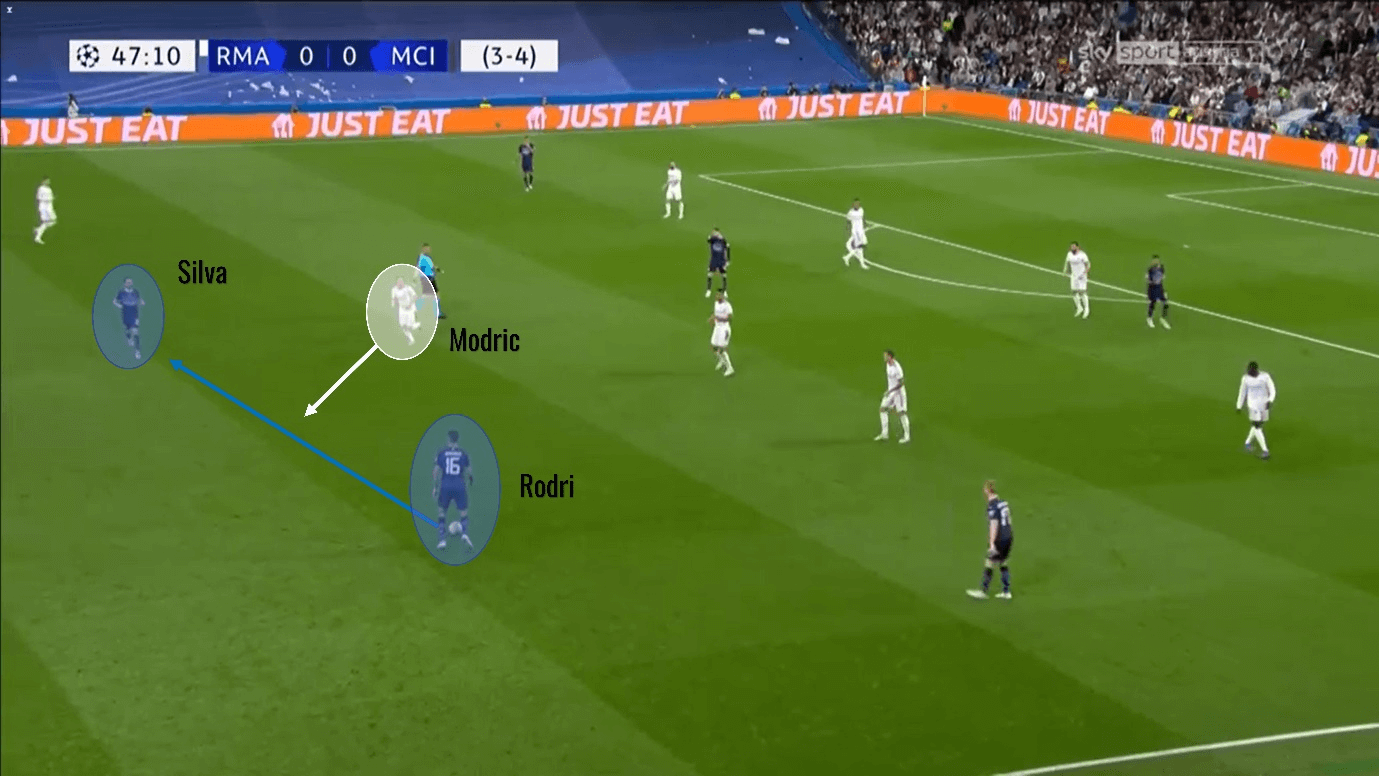
In this example, Modrić starts in a flat midfield three to cover Valverde who is rotating back into position. As Modrić sees Rodri looking to switch the play he closes in, cutting off the pass to Bernardo Silva while forcing Rodri to find another option. After Modrić has closed down the option he closes in on Rodri starting a press on Man City. Rodri had to turn back to where the ball came from which confined City to using the wide channel.
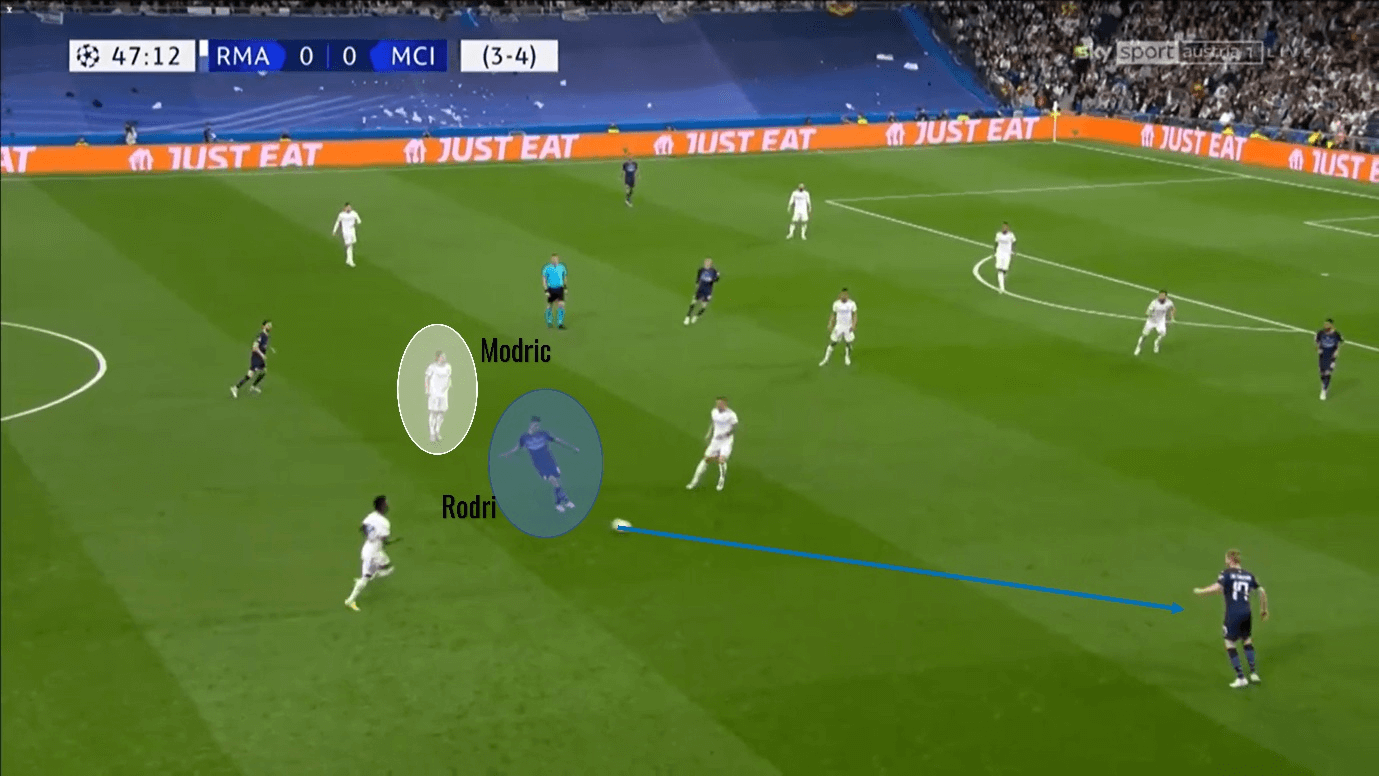
Modrić will also fill in for any players out of position in the midfield when they are looking to keep the shape compact. With Kroos being another senior player in the team, they look to cover each other in midfield. Modrić is aided by the presence of Casemiro as well in the defensive midfield position as the Brazilian will sit back in attack allowing Modrić to have the freedom to focus on his offensive play.
When defending set-pieces, Modrić usually sits on the edge of the box because of his lack of height, which with his incredible skills gives him a great position to pounce on any balls that drop to him. In this position, he is aggressive in his press to prevent any counterattacks while also giving away tactical fouls for his team.
Modrić’s defensive work rate to track back from set-pieces is fantastic with him rarely holding back from tackles. In the PSG match in the Champions League, Modrić chased down Messi who had broken from a set-piece. He started next to the Argentine and sprinted back to put in a perfectly timed sliding tackle to take the ball away from Messi.
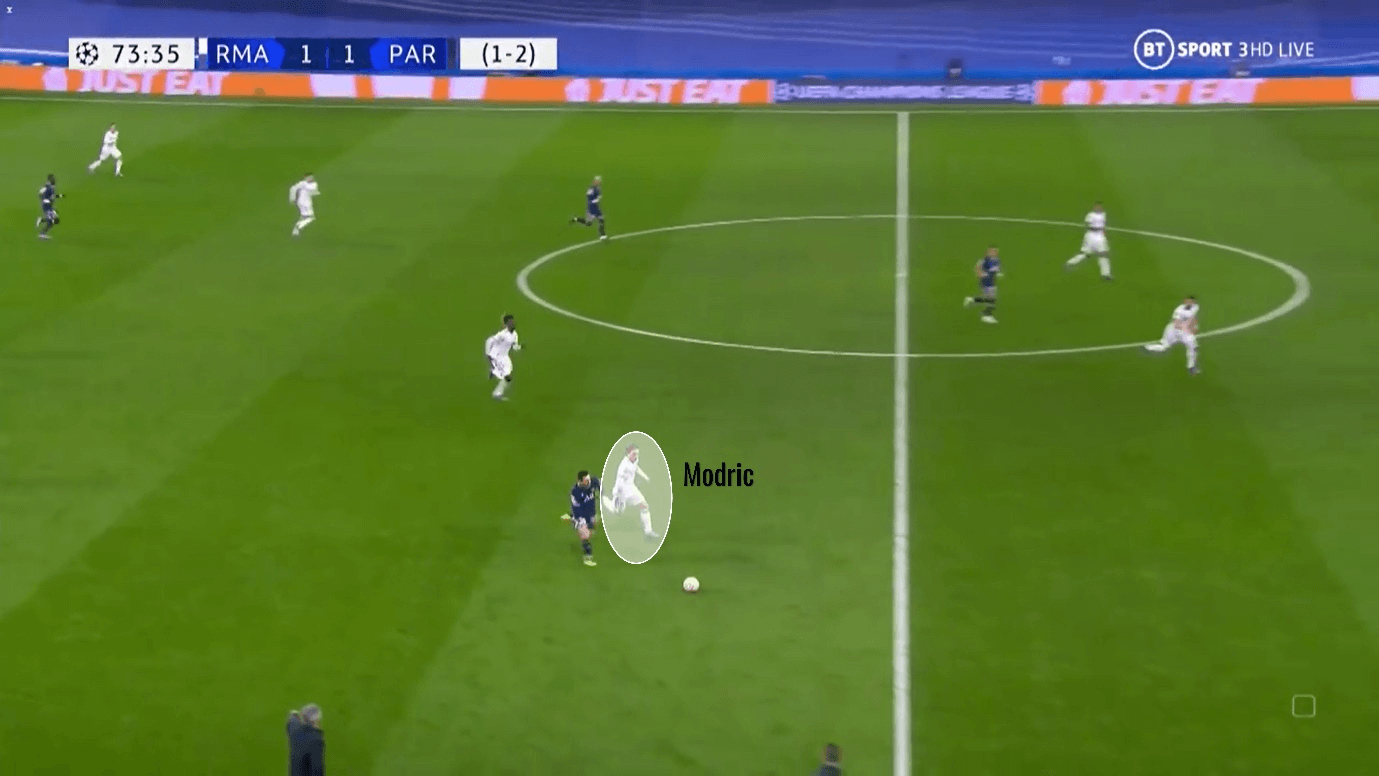
While Modrić takes on only a limited number of defensive responsibilities, he is most effective in attack where his creativity and superb passing ability truly shine. In transition, Modrić can be a great asset for a team and can turn defence into attack quickly, with his turn of pace, dribbling and passing ability he can break down a team to create chances.
Contribution in transition
Even at his age, Modrić has a deceptively quick change of pace with the capabilities to keep up with the top players, this aids his aggressive press which is vital for ball-winning in the midfield area. The Croat is usually looking to win second balls from clearances or misplaced passes with his intelligence and speed to get ahead of the opposition. This means he can stay relatively high up the pitch to play off the strikers but he can be an outlet for the defence to quickly attack the opposition.
In the transition from attack to defence, Modrić is often slow to get back with the knowledge that there are two central midfielders back already who will defend in his absence, and with Valverde in the squad, he usually covers the midfield on the right-hand side. In defence, is not where Modrić should be spending his time in defence with him being such a prolific playmaker, but the Croat will still put in a shift if he needs to for his team. It is best to have him on the edge of the defence for quick breakaways or to press the opposition.
Modrić, as seen in the previous section, does make recovery runs when he is in a position to stop an attack or when the opposition looks to switch the play through the middle of the pitch. He will also press aggressively when the opposition midfielder or defender has the ball. When Real Madrid do win the ball and play it quickly to Modrić, he can exploit the space left behind with speed and accuracy. With the pace of Benzema, Vinicius Junior and Rodrygo he can play through balls splitting a defence, which he has the second-highest accuracy on through passes in the Champions League with a 64% success rate.
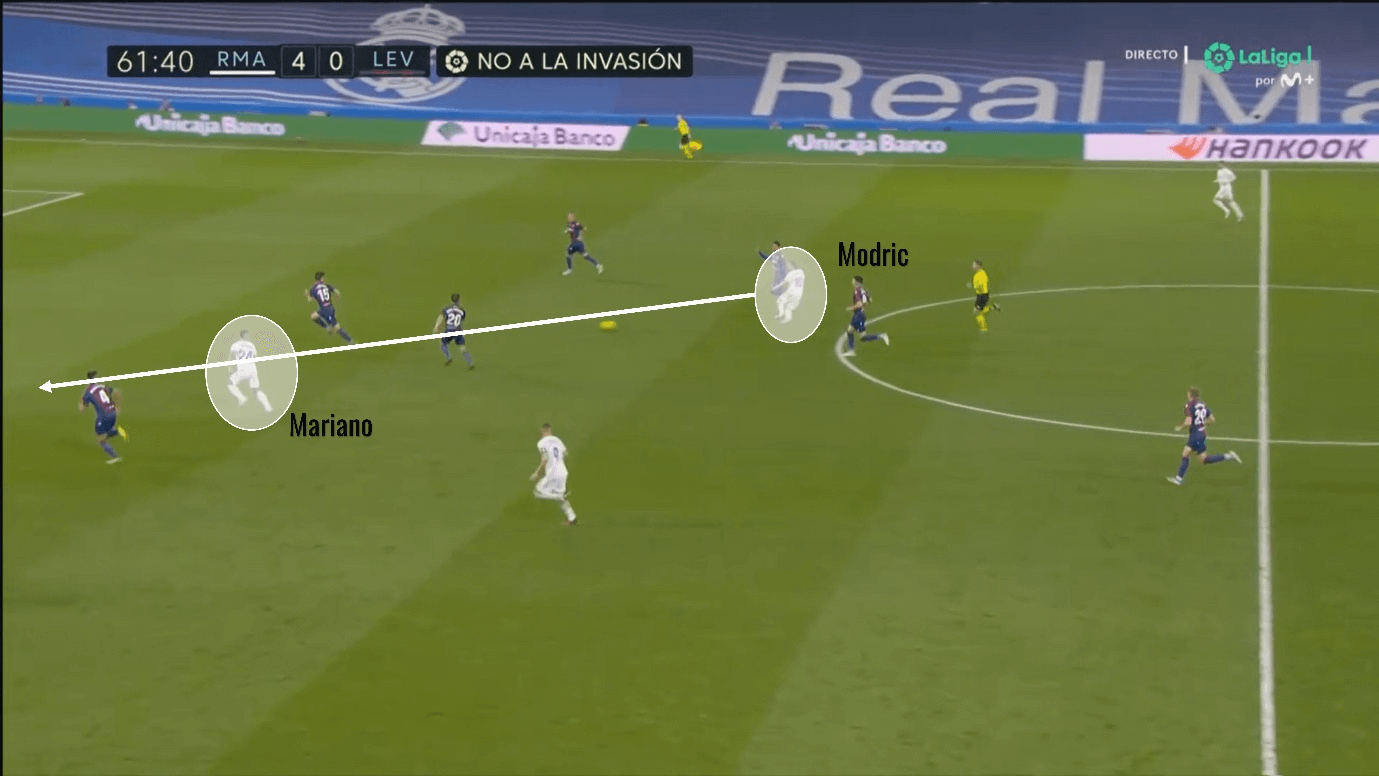
With all of Modrić’s strength transitioning from defence to attack, it is no wonder Madrid has scored so many goals this season. When the Croatian can move into space and time to play a killer pass he is incredible. He is most suited to quick attacks looking to break a defence quickly by dribbling through the lines or playing quick short passes to get through a block. He can also play in a slow build-up system however he prefers there to be quick play and lots of movement in between the lines. Modrić has averaged 2.93 dribbles per 90 with a success rate of 62.4%, this is not outstanding but given the player’s tendency to be a playmaker rather than a dribbler it is not a must for his playstyle, he does have the ability to take on players though — something that is in his toolbox for breaking down a defence.
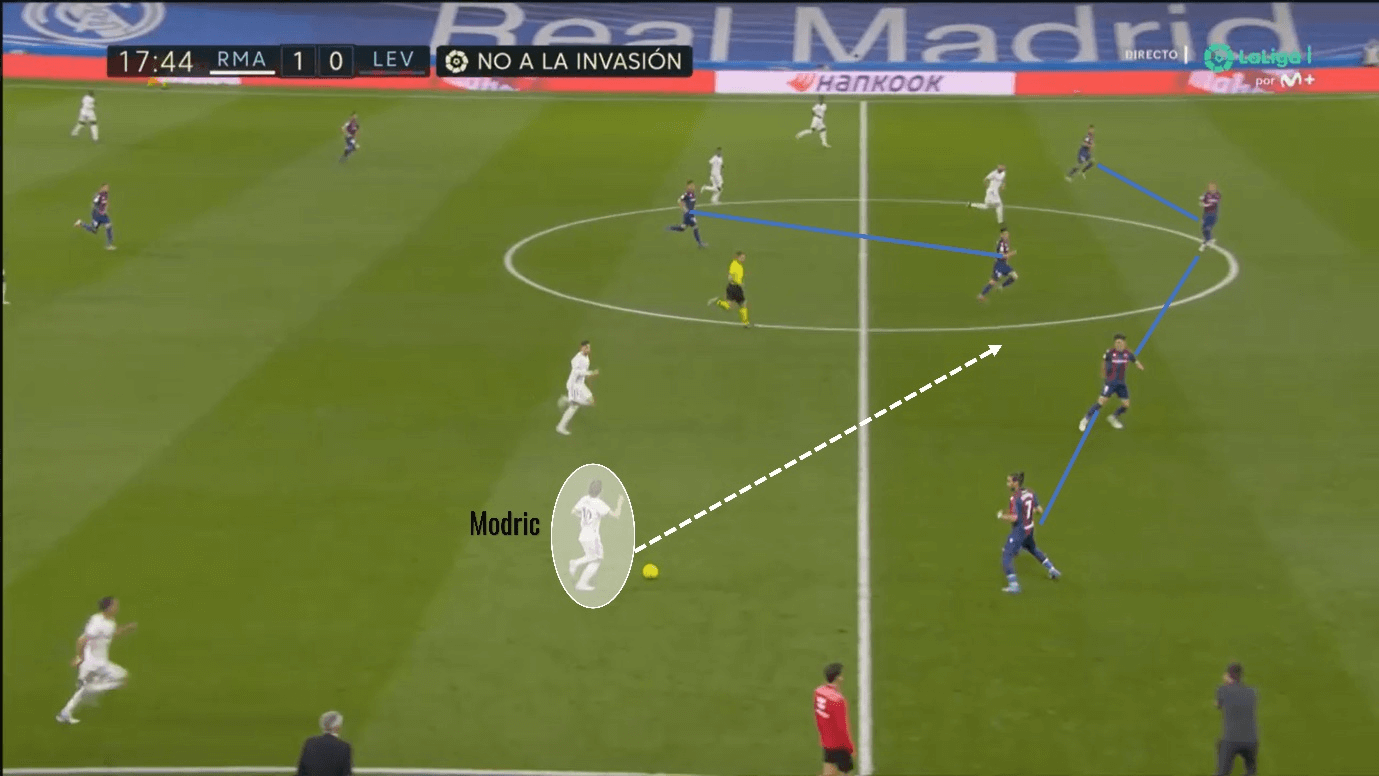
Here is a perfect example of Modrić picking up the ball after Levante had attacked, giving him lots of space and time on the ball. Modrić has now got the ball and looks to drive at the Levante defence with there being no progressive pass available. The Croat is always looking to progress the ball and rarely looks to play backwards, this is what makes him so dangerous in this set-up as he has enough quality in front of him to convert any opportunities presented into goals.
Giving Modrić time and space is a dangerous game. When not picked up, he is given the liberty to bring the ball closer to the Levante box. Modrić is already looking to play a through ball into one of the strikers, with Benzema looking to run in between the Levante defence.
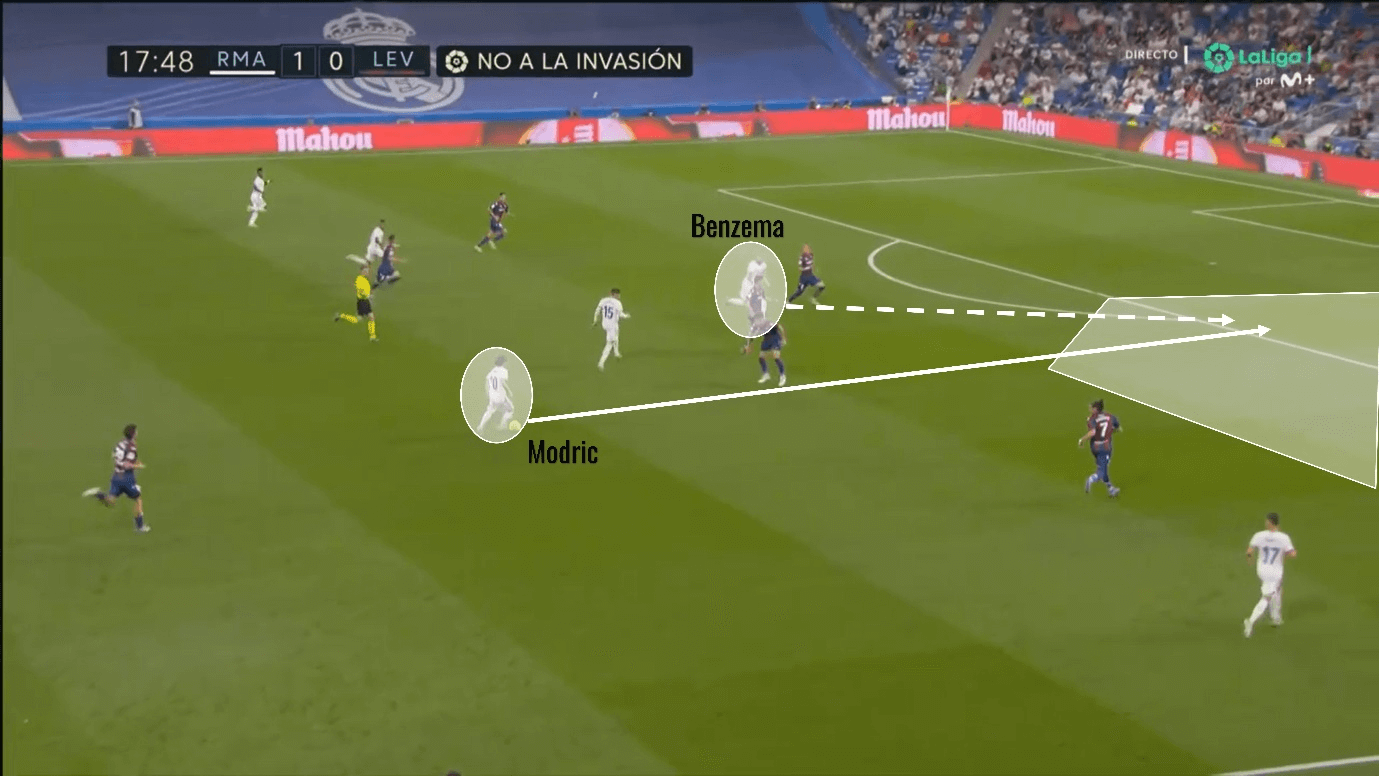
The Croat is the perfect tool for Madrid to create chances with his ability to play the perfect ball and his extremely good reading of the game. With Real getting back to their best, there is no doubt that Modrić should be getting more praise for his part in their goal scoring tally of eight from counter-attacks in La Liga.
Youth knocking at the door
Modrić has been a staple of the four Champions League-winning sides in his 10 years at the club. The Croat, however, is not the same as he used to be, adapting his game to accommodate his capabilities at his age. The 36-year-old has had to change his playstyle over time — becoming a less defensive player and focusing on his attacking duties more than before.
When looking at the statistics, Modrić has declined in the majority of defensive stats compared to the 2020/21 season. Last season, Modrić averaged 6.32 recoveries per 90 which compared to the 5.52 per 90 this season, this may be down to a change in his role in the team or due to the demand on him at 36. He is much more conservative in his recovery, most likely accommodating for his reduction in his ability to keep his intensity of previous seasons to increase his game time over the course of the season.
Modrić has also been regularly substituted this season, with the Croat only averaging 73 minutes per match this season. The introduction of Camavinga, who is a more defensive-minded midfielder, has given Real more defensive stability. This has been a key part of Real Madrid’s ability to hold onto winning score lines with them getting three midfielders behind the ball. Camavinga is surely going to replace Modrić in the seasons to come, with the Frenchman catching the headlines on more than one occasion. Modrić has only managed to complete six matches this season which shows that the demands of playing at the top level are starting to catch up to him.
This is not to say that Modrić doesn’t have a role within this squad at this age. He is still their third-highest assist maker this season within 12 in all competitions, only four behind Benzema at the top of the list. Modrić has also got lots of experience from his long time at the top of his game which has benefitted the mixture of senior and youth players within the squad
In the final third
Modrić is not only world-class in midfield but also around the box. He is a mastermind at creating chances averaging 0.41 goal involvements per 90 contributing massively to Madrid’s 80 goals this season in all competitions.
The Croatian will situate on the edge of the box nearest to the ball scanning around. Once the ball is at his feet he already knows exactly what he is going to do. Most often it is a lofted ball into the back post, a through ball or a deep completion for an oncoming teammate. The number 10 has a total of 37 deep completions in La Liga this season, ranking him 14th for that particular metric.
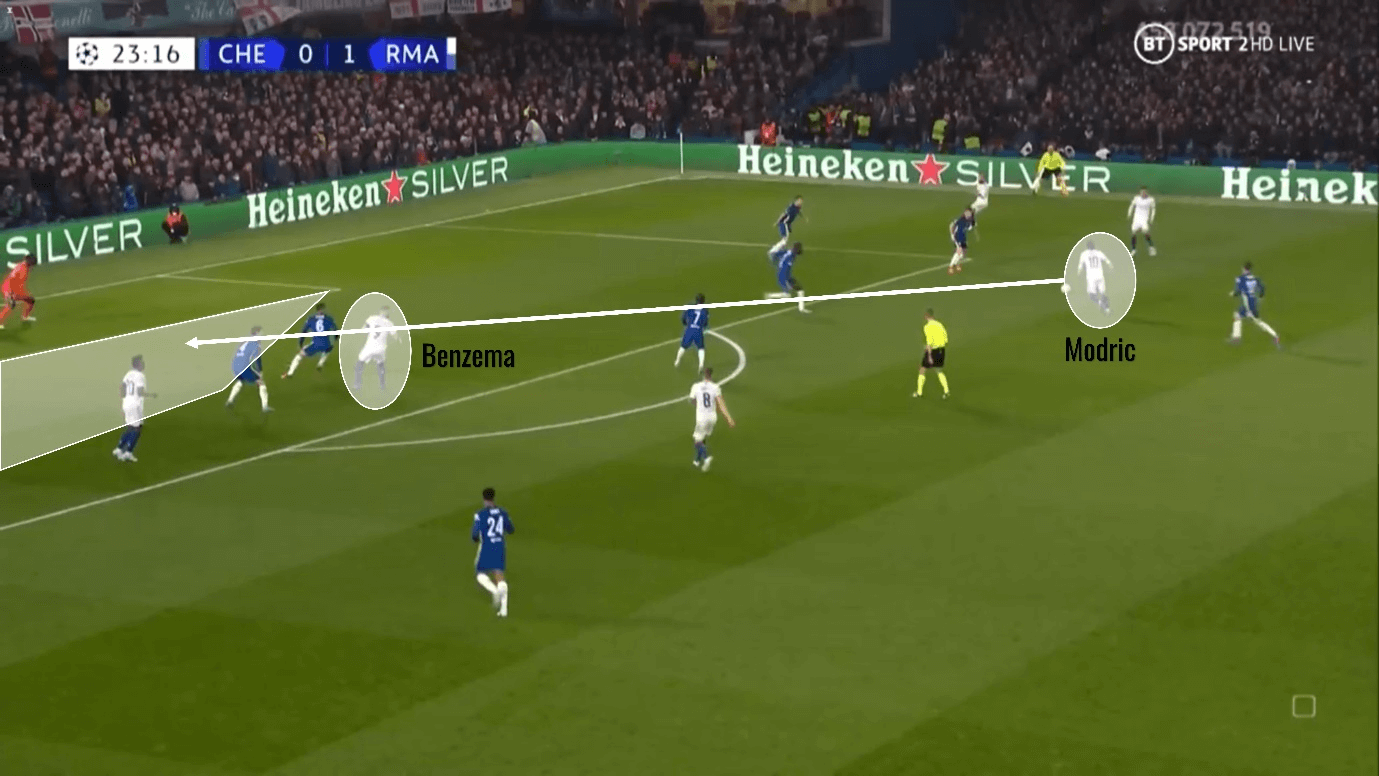
The Madrid number 10 uses his spatial awareness and intelligence to choose the best decision in crucial moments of the match. In the Champions League this season, Modrić has the fourth-highest number of smart passes with 21 and ranks fifth for accuracy of the smart passes with a 61.9% completion rate. This is truly an area of his game that is not going to disappear with age and allows him to be an integral part of a squad even if he has few defensive duties.
There are plenty of moments where Modrić has pulled off unbelievable passes putting the ball on a plate for a striker. An obvious example is from the Champions League where he whips a ball outside of the boot straight to Rodrygo at the back post. This seems to be a key feature of his assists, lofting a ball over the top, often with the outside of his right boot if he is on the left, straight into the path of a teammate.
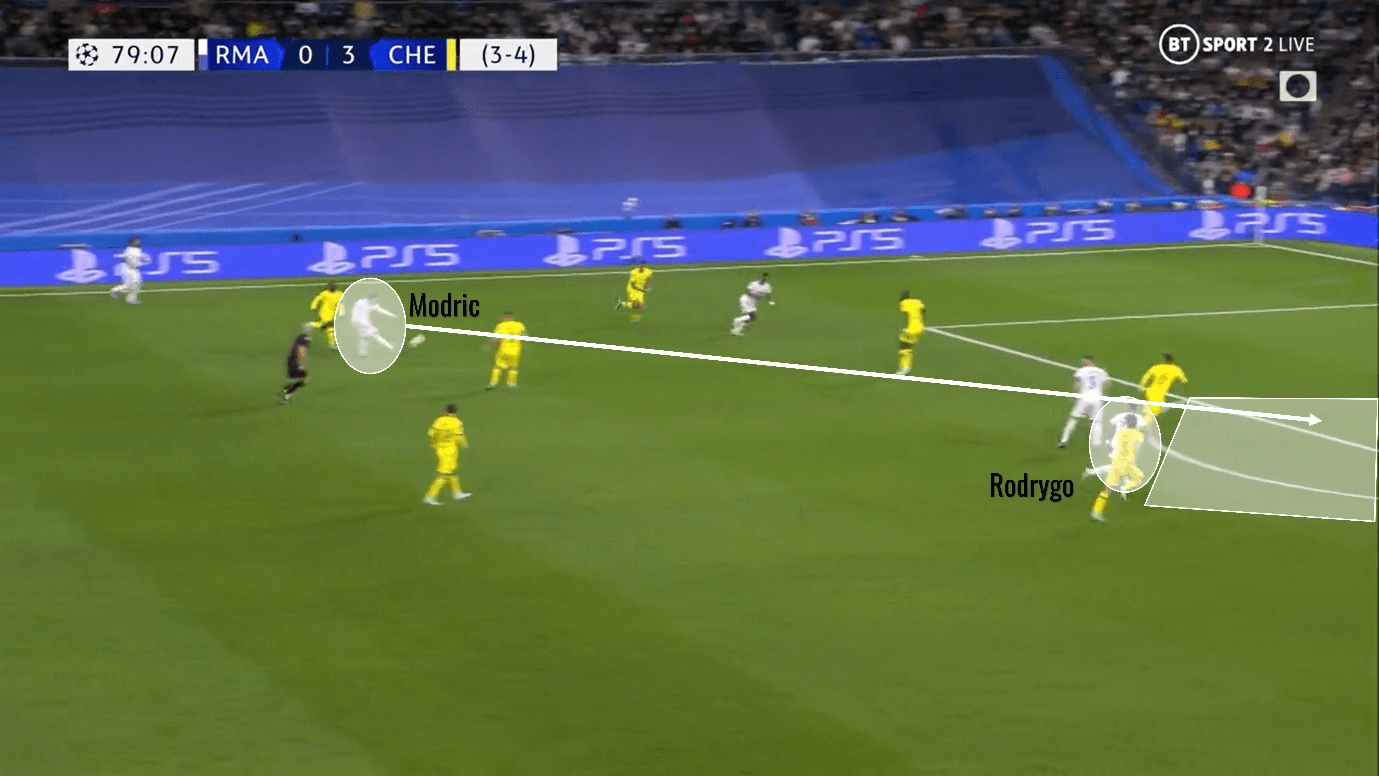
For a striker, Modrić is a dream to play with having elevated Benzema this season and will no doubt supply any striker with chances. Modrić’s 0.3 assists per 90 in all competitions for Madrid this season, enabling Real to reap the rewards averaging 2.1 goals per game. There are too many moments this season where Modrić has been terrific for Madrid in his playmaking and cannot be underestimated.
Conclusion
To be able to compete and excel at the top of European football at 36 is no small feat for any elite footballer, especially when you play in a central position with such importance in a demanding environment like that of Real Madrid. Modrić is not performing at the same level defensively as he has in previous years but in attack, his experience and decision making are still at their very best. The Croatian is still one of the top attacking midfielders in the world with his superhuman ability to pick out a pass.
Even with Camavinga knocking at the door to get into the starting 11, it still looks like the Ballon d’Or winner has so much to offer with his playmaking abilities that he is unlikely to be too tempted by retirement. Modrić is touted to be deciding on his future after the 2022 World Cup, but with it not looking like the midfielder is slowing down any time soon, seeing the Croat play past 40 wouldn’t be a surprise.

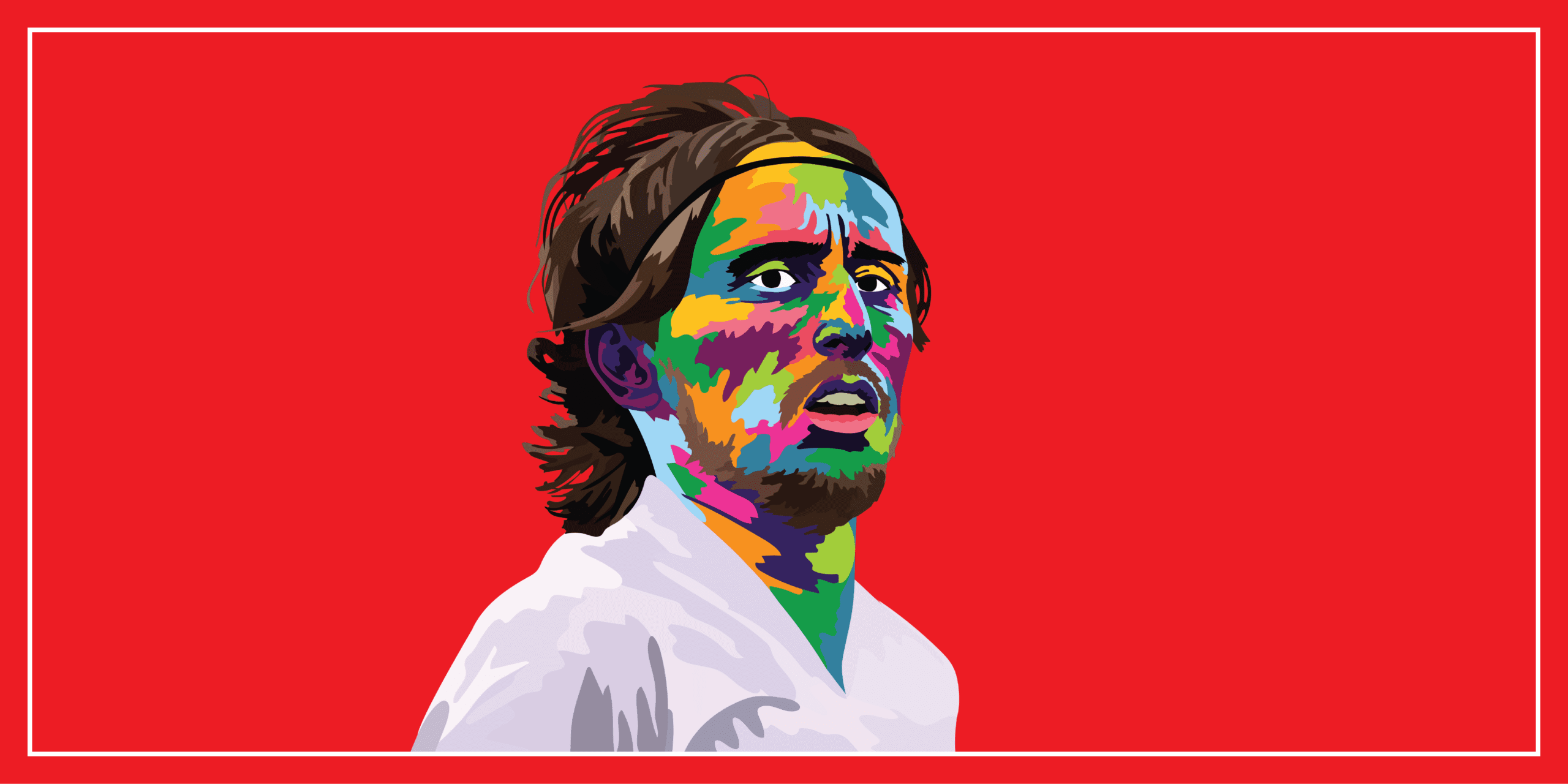




Comments